1987 Porsche 944S vs. 1988 Jaguar XJ-S 3.6
We revisit the 1980s comparison between Porsche 944 and Jaguar XJ-S to find out how these unlikely rivals compare today.
JAGUAR v PORSCHE SPORT PACK XJ-S MEETS 944S
Porsche’s transaxle sports car might seem like an unlikely XJ-S rival but back in the day What Car? found it a closely fought comparison, so we arrange a rematch to see how they compare as modern classics
At first glance you could be forgiven for thinking that what we have here is very much a case of automotive chalk and cheese, a sign perhaps that this new editor doesn’t have a firm hand on the wheel...
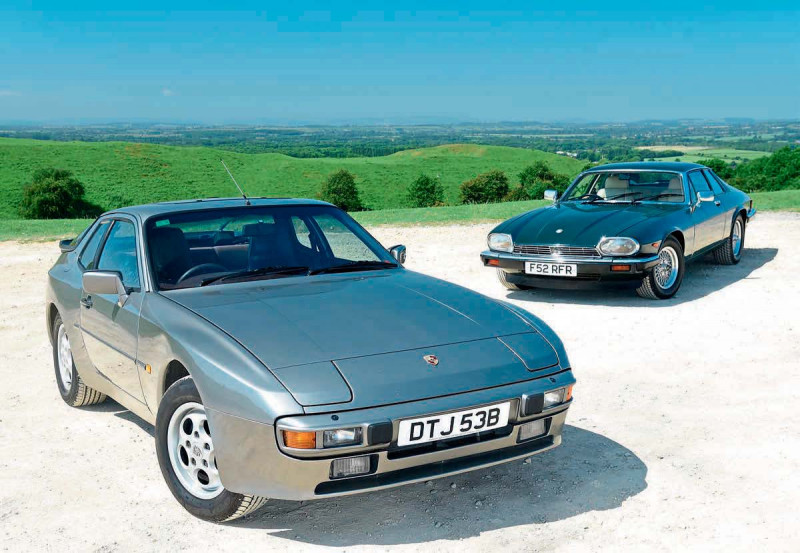
Yet ponder a little more and the comparison between Jaguar’s traditionally engineered grand tourer and Porsche’s unconventional ‘transaxle’ sports car makes rather more sense. Indeed, although the more classical style of the Jaguar might suggest it’s from a different era than the aggressive wide-hipped Porsche, the two designs are in fact remarkably close in age. The XJ-S arrived in 1975, but Porsche’s 924 was unveiled just a year later and it was this car which would evolve into the 944 in 1982.
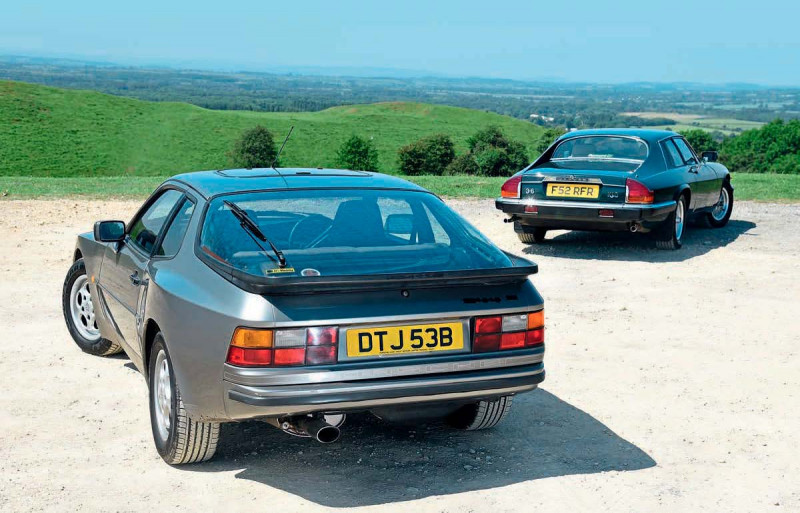
This coincided with the fitment of the AJ6 powerplant to the Jaguar and in 3.6-litre, six-cylinder form it was initially offered only in five-speed manual form, suddenly making it a viable alternative to the Porsche. When the Sports Handling Pack was offered on the XJ-S from 1987, it coincided with Porsche introducing the 16-valve 944S which at 190bhp compared well with the Jaguar’s 221bhp. In fact the cars were sufficiently similar – on paper at least – for What Car? to conduct a 944 v XJ-S twin test back in March 1988.
All of whichmeant that when we acquired a 1987 example of the 944S as a project car for our classic titles, we were keen to see how the two cars compared today.
Porsche 944S
Just as Porsche today is an automotive goldmine, back in the early ’80s it was similarly riding high while Jaguar was rather floundering in its pre-Egan days. The origins of the 944 though go much further back, to a time when Dr Ing HCF Porsche AG was a far less confident organisation, relying heavily on the fees from consultancy R&D work for the bigger Volkswagen group.
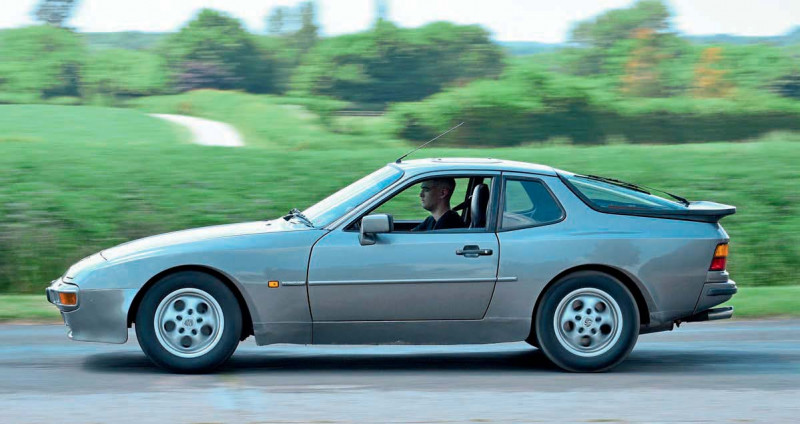
One such lucrative assignment was the brief to develop a new VW/Audi coupe, using as much parts-bin componentry as possible. An Audi 100 engine was chosen, inclined at 30 degrees to allow stylist Harm Lagaay to achieve a suitably low nose, while being Porsche they couldn’t resist putting at least part of the drivetrain in the back, the transaxle gearbox sitting under the boot floor and providing near-perfect weight distribution.
It was all set for launch when VW management, faced with the early ’70s oil crisis and buoyed by the success of the Golf, decided to can the project in favour of the Golf-based Scirocco coupe.
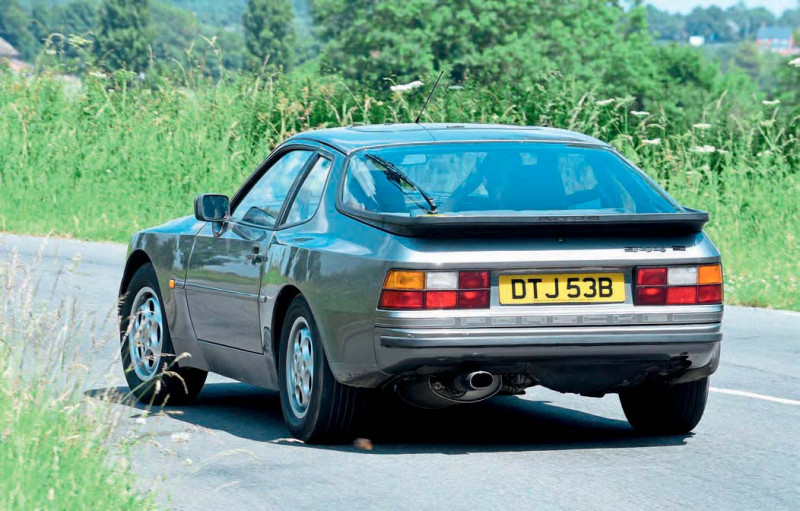
All of which worked in Porsche’s favour as a ready-made replacement for the 914 which with its air-cooled tech was near the end of its shelf life. A deal was struck for Porsche to acquire the rights to the design and spare capacity at Audi’s Neckarsulm plant was used to manufacture the car.
The Porsche 924 was launched in November 1975 and although performance was more GTI than 911, the car was a success, especially in the US market. In 1978 the 170bhp 924 Turbo showed the potential of the basic design, by which time the 924 had become the best-selling car in Porsche’s history, so when the ‘EA831’ VW/ Audi engine was set to leave production, the decision was taken to thoroughly overhaul the car and extend its life.
Rather usefully, the design of the Porsche 928’s V8 engine had been created to allow the possibility of producing a four-cylinder unit which would effectively be one half of the V8. Not only would this silence critics claiming that the car wasn’t a ‘proper’ Porsche but would also offer much improved performance potential.
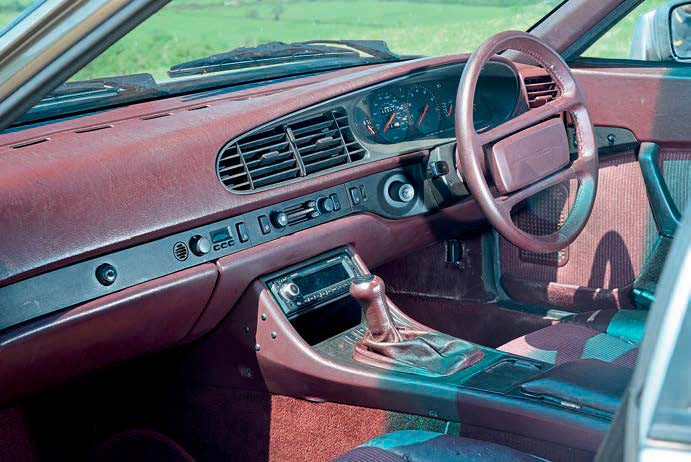
The 4.5-litre capacity of the 928 engine meant that a single bank worked out at 2.25 litres – an unusually large capacity for a four-cylinder powerplant, especially one destined for a sports car. To avoid an agricultural roughness, the design incorporated twin balancer shafts which ran at twice engine speed and the production version used a 2.5-litre capacity.
The wider body was similar to the style debuted on the limited-production 924 Carrera GT but with the wide arches now in steel, the result being a car which had an aggressive stance a world away from the neat but unassuming 924.
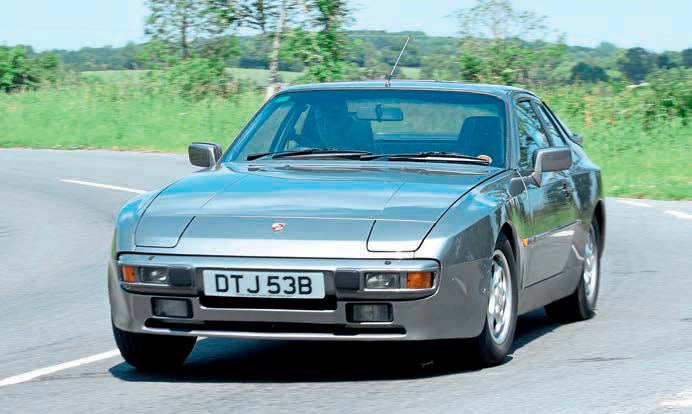
The 160bhp 944 was introduced to the UK in May 1982, positioned as a more conventional, user-friendly model than the more specialised air-cooled cars. The first big changes arrived in 1985 when the 944 Turbo joined the range boasting 220bhp, lifting top speed above 150 mph and sprinting to 62mph in 6.3 seconds.
A host of upgrades were applied across the 944 range at the same time, including suspension and engine revisions and a revised dashboard-moulding these days referred to as the ‘Oval dash’. Meanwhile, the 944S model was added to the UK range in September 1986, essentially a 190bhp 16-valve development of the original engine.
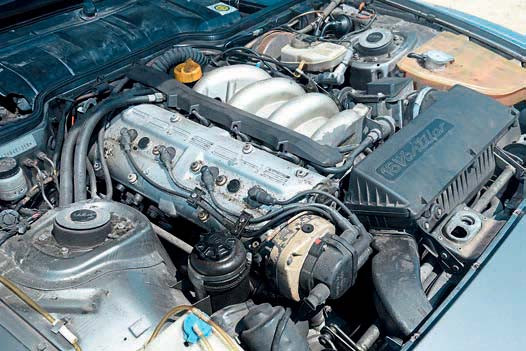
In 1989 the regular eight-valve 944 received a capacity hike to 2.7 litres and later in the year the 944S2 was introduced, incorporating more major modifications: the bore and stroke were increased to give a capacity of 3 litres, producing 211bhp and 207lbf.ft torque. Production of the 944 would end in 1991, although significant elements of the car would continue in the 968, despite Porsche’s claims that 80 per cent of the car was new.
It’s a 1987 example of the 944S we have here and sitting next to Dan Pitt’s XJ-S it’s hard to believe it’s actually a year older than the Jaguar. Turning the 924 into the 944 involved little more than a set of wider wings which were hand-welded to the same basic bodyshell during production, yet the difference is night and day. In fact, I find the 944 to be the better balanced shape, the 924 looking slightly awkward next to it. With its low nose courtesy of those pop-up lamps and the staggered ‘teledial’ wheels giving it a chunky, squat stance it looks pure 1980s and every bit the equal of the 911.
They couldn’t resist putting at least part of the drivetrain in the back
Step inside – overlooking the Mk1 Golf door handle, if you will – and the interior continues the ‘Duran Duran meets Margaret Thatcher’ theme. The burgundy seats are paired with a burgundy dashboard moulding, burgundy carpets, burgundy door cards and… well, you get the picture. Retro palette aside, the Porsche is nicely put together, with a solid Germanic feel to the fixtures and fittings. The ardent VW/ Audi fan will spot a smattering of parts-bin switchgear in places but in general by the time of this ‘oval dash’ car the visible bits were largely bespoke Porsche with the Golf and Passat componentry behind the scenes. Twist the generic 1980s VW ignition key and you’re greeted with something very different from a Jaguar as the big fourpot rumbles into life. You can only admire Porsche for its optimism in claiming that the balancer shafts gave it six-cylinder smoothness, since the reality is that this really isn’t a paragon of mechanical smoothness, especially at idle.
It sounds purposeful for sure, but the four-cylinder beat combines with mechanical thrash from the many belt drives and the balancer shafts to make it agricultural in many ways.
The big four does offer plenty of torque though and at low speeds it’s a willing performer, happy to pull from low engine speeds in urban traffic. Which is perhaps just as well, since the shift action may be better than you find in a transaxle Alfa Romeo Alfetta or 75 for example but is still somewhat rubbery in action. What the twin-cam head of the 944S added was some top-end urge to go with the low-end lugging ability and it’s really very different on the road from the eight-valve cars. The nature of the design means it will never be a high-rev screamer in the Honda VTEC mould, but it’s a whole lot eager than the eight-valve car, taking on a noticeably different character as the needle passes 4000rpm.
The end result is a car which does need to be driven hard to get the best from it, which ultimately gives it a very different character from the more easy-going Jaguar. And it’s only when pushing hard that you’ll appreciate what the period road testers were talking about when it comes to the handling. In spirited driving, the nicely balanced layout starts to make itself felt as it corners neutrally until speeds really start to rise. At which point you’ll discover that the Weissach engineers set the car up to understeer initially as the limit is reached, providing just the warning you need to rein things in a little.
Perhaps the biggest surprise when driving the 944 hard though is just how soft the standard suspension feels, with the car wallowing in fast dips and tending to nose-dive noticeably under hard braking. Back in the late ’80s this would have been considered a stiff, sporting set-up whereas today’s rock-hard M Sport BMWs make it seem like a family hatch.
Elsewhere, the Porsche compares well to the Jaguar in terms of practicality. Like the XJ-S, those rear seats are something of a token, Porsche even carpeting the rear faces so that the car can be used as a two-seater with them folded flat. The big glass hatch gives the car a real edge over the Jaguar though, with the 944 able to swallow a bicycle. Parts support is on a par with the Jaguar too, with a legion of Porsche specialists here in the UK able to sort out everything except a few detail parts.
Jaguar XJ-S 3.6
I’ve been lucky enough to sample most incarnations of the XJ-S and XJS over the years, from a pristine pre-HE example to the last-of-the-line 4-litre convertible and 6-litre coupe, plus our own long-term project car, a facelift 4-litre coupe which lived with me for a while.
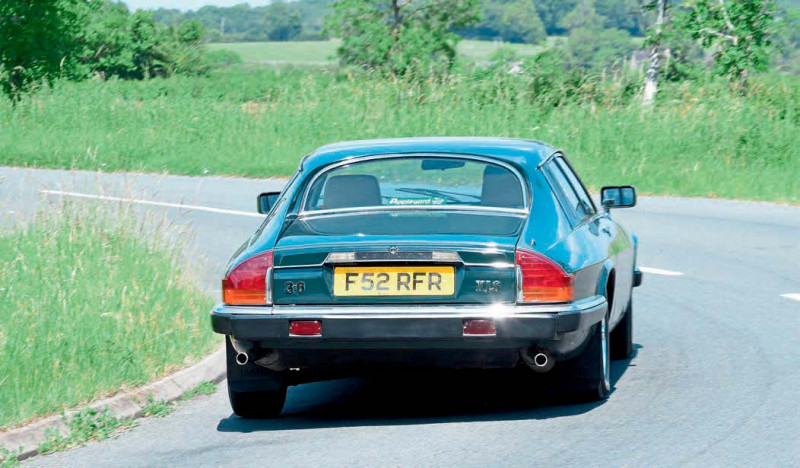
The one XJ-S I’m not so familiar with though is perhaps the most significant of them all: the early six-cylinder car with its standard-fit five-speed manual. It was after all the smaller engine with gave the car a renewed a peal in the marketplace just at a time when it was most needed.
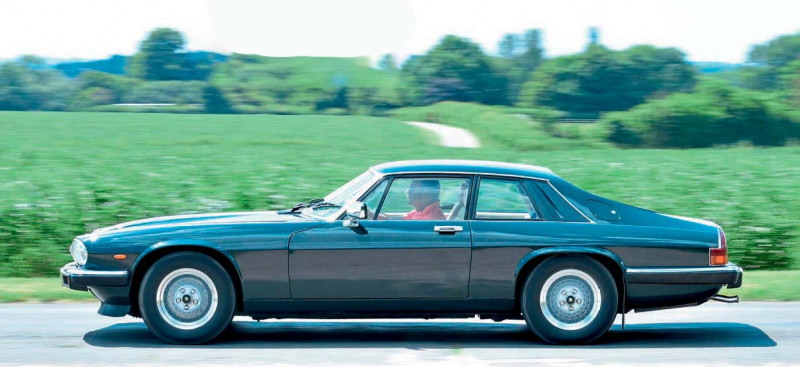
Although an uplift in sales was naturally welcomed, the six-cylinder XJ-S was created with another purpose in mind. As a replacement for the long-serving XK engine, the new AJ6 unit had been developed for the all-new XJ40 saloon but understandably with engineering resources stretched thin, it was felt that launching a brand new car with a brand new engine would be one step too far.
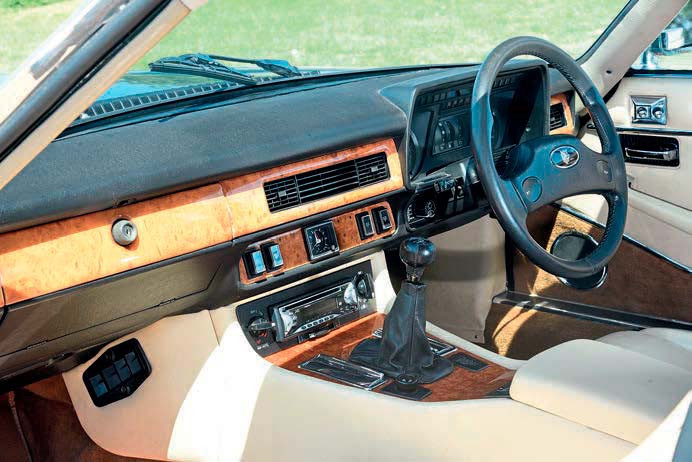
Accordingly the 3.6-litre AJ6 was offered first in the XJ-S, the idea being that the lower production volumes would allow Jaguar to keep a closer eye on problems. It proved to be a smart move, with Sir John Egan recalling that at volumes of over two or three engines per day the AJ6 was unacceptably rough and unrefined, subsequently needing to be virtually hand-finished.
The low-volume strategy allowed production tolerances to be addressed and engine mountings redesigned to solve the problems, with the surge in sales of the smaller-engined XJ-S a welcome bonus. The car we have here dates from well after the introduction of the AJ6 and cl rly benefits from the refi incorporated during production.
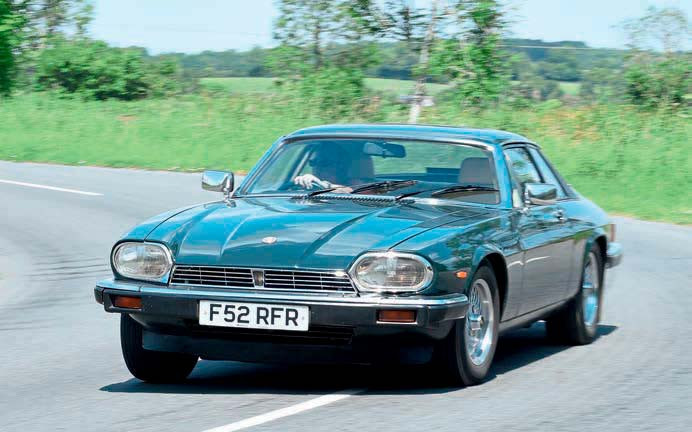
Launching a brand new car with a brand new engine would be one step too far
Being a 1988 model, it also benefits from the Sports Handling Pack which was offered as standard on the six-cylinder car from September 1987 to capitalise on Jaguar’s newfound motorsport success which had included Tom Walkinshaw’s victory in the 1984 European Touring Car Driver’s Championship and a win in the 1987 World Sportscar Championship with the XJR8. On paper the changes sound relatively minor but combined to produce a car very different in character. The front springs were stiffened by 43 per cent, the rear coils by just three per cent, while the front anti-roll bar was thicker and a rear anti-roll bar was added. Stiffer Boge dampers were added and the steering given firmer rack mounts and revisions to create greater weight at the wheel.
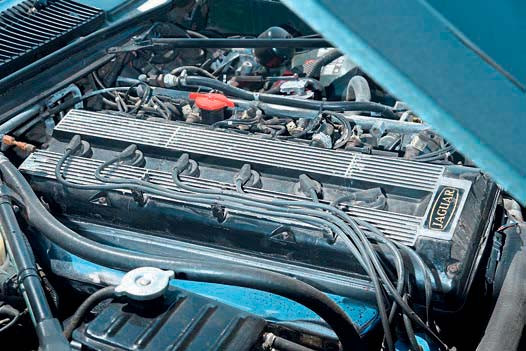
Wheels were the oh-so-eighties lattice alloys, wearing 235/60 rubber, with Jaguar specifying the Pirelli P600 from new. On the inside, the car was less overtly sporting than the Porsche but gained detail changes only immediately obvious to the XJ-S enthusiast: sports seats, a thickerrimmed steering wheel and extended leather covering on doors, armrests and console.
The 3.6 coupe retailed for £23,821 which it might surprise you to learn, was some way less than the 944S at £26,995 and even undercut the £24,238 eight-valve Porsche. All of which made the Jaguar look like a lot more car for the money, but how does it compare to the Porsche today?
Really very well, as first impressions go. It helps of course that this is one of the nicest examples of privately owned XJ-S’s I’ve experienced for some time and although owner Dan points out details here and there which he feels need sorting, it looks tremendous and every bit as arresting as the Porsche.
It is, of course, entirely different with its long nose and conventional proportions, as well as being 58mm wider even without the benefit of flared arches. Certainly with the two cars sitting side by side, the Jaguar naturally makes the 560mm shorter Porsche look small. This also explains the very similar performance, since the greater bulk translates to a 400kg weight penalty, offsetting the AJ6’s greater power.
The cabin ambience of the Jaguar couldn’t be more different from the burgundy plastic and leatherette of the 911, with the wood and leather creating a feel which is decidedly less sporting and more grand touring. Conventional wisdom would have you believe that ’80s Jaguar quality fell short of the exacting standards of German makers, yet the Jaguar interior has stood the passage of time far better than the Porsche trim. The hot sun has done the vinyl seat facings of the 944 no favours at all, with the surface crazed and starting to fail, while the dashboard top is starting to warp around the fittings.
Much like the pre-production XJ40 I drove recently, I always find the sight of three pedals and a gearlever in an XJ-S vaguely disconcerting but for several years this was the standard layout for the basic car, the automatic not even offered until late 1987 when it became a £740 option. Jumping straight from the Porsche into Dan’s XJ-S, the increased refinement of the straight-six powerplant is blindingly obvious, the teething problems with the AJ6 having clearly been engineered out by the time this car was made.
The thicker steering wheel rim isn’t immediately obvious to the naked eye, but is something you notice as soon as you grasp it for the first time, while the clutch action is firm enough to remind you that this isn’t a Japanese hatchback.
The gearbox itself is a Getrag ‘265’ five-speed unit as found in numerous BMWs of the period and proves to be another area where the Jaguar has aged better than the Porsche. TheWhat Car? road testers back in the day judged the Jaguar’s manual shift to be notchy, with a heavy clutch action compared to the Porsche’s positive change but as the cars have aged, the position has reversed somewhat. The many bushes and joints in the long linkage to the 944’s rear-mounted gearbox mean that on this example the shift is stiff and rubbery compared to the XJ-S.
To anyone familiar with the XJ-S in its regular guise, the suspension and steering revisions make themselves felt as soon as you pull away. Where the nose of the standard XJ-S would tend to rise under even moderate acceleration, Dan’s car feels infinitely more poised, while the revised steering doesn’t translate to added effort but does impart a sense of closer control.
Unsurprisingly, the manual feels noticeably sharper at lower speeds than the lazy automatic and allows the driver to make full use of that 221bhp. Yes, in urban traffic the automatic has the edge on convenience but out of town, the 3.6 is sufficiently torquey to avoid frequent stirring of the lever. On fast and flowing A-roads the revised XJ-S also leaves behind the floaty nature of the regular XJ-S, feeling that bit more composed over dips and crests as well as displaying notably reduced body roll.
After an all-too-brief stint at the wheel of Dan’s car I was left with the impression that the handling revisions and manual box combine to give the big Jaguar Coupe something of a BMW feel – the E9 3.0-litre Coupe or a 635CSi E24 spring to ind. And when you consider that this is a 4.8m-long coupe built on the chassis of the 1960s Series 1 XJ that’s no small compliment.
Verdict
Having lived with both XJ-S and 944 project cars, this comparison threw up a couple of surprises, both for me personally and for XJ-S owner Dan who remembers having a similar Porsche in the family back in the day.
The first was that the Jaguar has aged so well in comparison to the Porsche – even allowing for the fact that this is clearly a cherished example – and that it’s perhaps the easier car to own today in terms of parts and specialist support. The second is just what a big difference the Sports Handling Pack revisions made to the XJ-S, turning a floaty cruiser into a surprisingly credible sports coupe. Yes, the Porsche ultimately offers better handling balance and grip but only when on the ragged edge and in the real world the Jaguar is quite capable of keeping up across country. It also offers a far greater degree of refinement and that just gives it the edge as an all-round package. PW Thanks: To Dan Pitt for the loan of his Jaguar XJ-S for our photo shoot.
TECHNICAL DATA 1988 Jaguar XJ-S 3.6
- Engine: 3590cc
- Max Power: 221bhp at 5100rpm
- Max Torque: 248lb.ft at 4000rpm
- 0-60mph: 8.4secs
- Top speed: 135mph
- Economy: 29mpg
- Transmission: 5-spd manual
- Price new: £23,500
TECHNICAL DATA 1987 Porsche 944S
- Engine: 2479cc
- Max Power: 190bhp at 6000rpm
- Max Torque: 170lb.ft at 4300rpm
- 0-60mph: 7.9secs
- Top speed: 142mph
- Economy: 30mpg
- Transmission: 5-spd manual
- Price new: £26,995


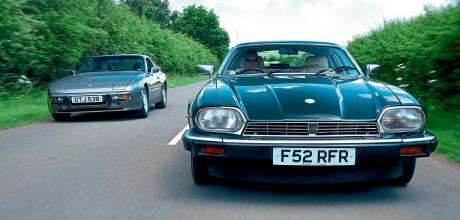
Porsche memories
Several fond memories were brought back when I ready our comparison feature between the Jaguar XJ-S and the Porsche 944 – because as a company director in the late 1980s and early 1990s I actually owned and ran examples of both. My 944 was an early 2.5, and my XJS was a late Celebration convertible, and at the time the two cars seemed so very different in focus. I had a BMW 635 CSi E24 between them, and at the time I thought that it did a good job of bridging the two:more sporty than my Jag and yet more of a grand tourer than the Porker. Do I agree that the Jag’s a better car? 35 year old me with his used 944 in 1988 wouldn’t have thought so, but another decade of life certainly meant that the XJS made more sense in middle age. Nowadays I drive an F-PACE, but part of me wishes I still had a sporty car sitting outside.